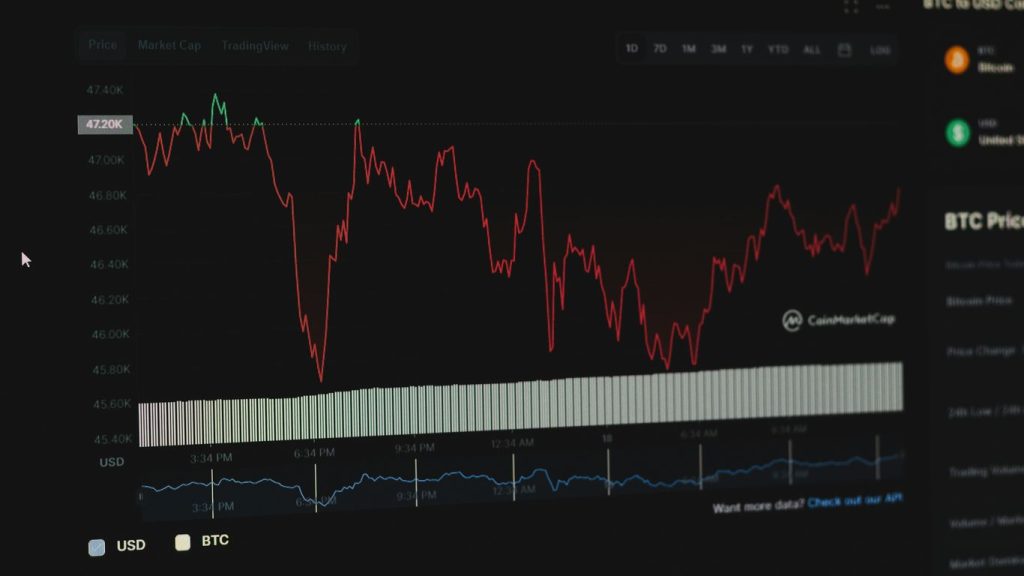Thinking about where to put your money for income? The JPMorgan Global Income Fund is one option folks are looking at. This review, JPMorgan Global Income Fund Review [2025], breaks down what it’s all about, how it works, and if it might be a good fit for your financial plans. We’ll cover the basics, the strategy behind the fund, how it’s been doing, and what you should consider before jumping in. It’s not always easy to figure out these investment things, but hopefully, this makes it a bit clearer.
Key Takeaways
- The JPMorgan Global Income Fund aims to provide investors with regular income. It does this by investing in a mix of assets that are expected to generate income.
- Its investment strategy often leans towards quality companies and avoids complex financial products like debt and derivatives, focusing on simpler, understandable investments.
- When looking at performance, it’s important to compare the fund’s historical returns against its benchmark to see how it’s stacked up over time.
- Like any investment, there are risks involved, including the general ups and downs of the stock market and specific risks tied to the fund’s geographic focus.
- For many in Singapore, accessing such funds might be through investment-linked policies (ILPs), which are offered by insurance companies, and sometimes require meeting certain investor criteria.
JPMorgan Global Income Fund Overview
Understanding The Fund’s Objective
The JPMorgan Global Income Fund is designed with a primary goal: to provide investors with a regular income stream. This income generation is a key feature, aiming to offer a consistent payout that can supplement an investor’s earnings or provide a reliable source of funds. The fund focuses on investments that are expected to produce income, which can come from various sources like dividends from stocks or interest from bonds. The objective is to balance income generation with capital preservation over the long term.
Key Investment Focus Areas
This global fund looks for opportunities across different markets and asset classes to achieve its income objective. It typically invests in a diversified portfolio, which might include equities, fixed income securities, and potentially other income-producing assets. The selection process aims to identify investments that have a strong potential for generating consistent income. The fund’s strategy is to spread its investments widely to manage risk and capture income opportunities wherever they may arise globally.
Potential For Income Generation
The potential for income generation is central to this fund’s appeal. It seeks to provide investors with a steady flow of income, which can be particularly attractive for those looking to supplement their regular earnings or build a passive income stream. The fund’s managers work to identify assets that are likely to pay out regular income, whether through dividends, interest payments, or other distributions. This focus on income means the fund’s performance is often viewed through the lens of its payout consistency and yield. For instance, the JPMorgan Investment Funds – Global Income Fund A (irc) USD Hedged is currently priced at $8.33, showing a slight increase of 0.12% recently, and has seen a decrease of 0.83% over the past year [32f9].
The fund’s structure and investment choices are geared towards creating a reliable income stream for its investors, making it a notable option for those prioritizing regular payouts in their investment strategy.
Investment Strategy and Philosophy

The JPMorgan Global Income Fund operates with a clear investment strategy focused on generating consistent income for its investors. This approach involves a multi-asset strategy, meaning the portfolio isn’t limited to just one type of security. Instead, it strategically allocates capital across various asset classes, aiming to capture income opportunities wherever they may arise. The core philosophy centers on building a diversified portfolio that can weather different market conditions while prioritizing the distribution of income. This investment strategy is designed to provide a steady stream of returns, making it an attractive option for those seeking regular income from their investments.
Long-Term Equity Investment Approach
The fund adopts a long-term perspective when it comes to its equity holdings. This means the asset management team looks for companies with strong fundamentals and the potential for sustained growth and income generation over many years, rather than trying to profit from short-term market fluctuations. The focus is on quality businesses that have a proven track record and a competitive edge. This patient approach to equity investment is a cornerstone of the fund’s strategy, aiming to build a resilient portfolio that can perform well over extended periods. It’s about finding solid companies and holding them, allowing the power of compounding to work its magic.
Focus on Quality Businesses
A key element of the JPMorgan Global Income Fund’s investment philosophy is its dedication to investing in high-quality businesses. This involves a rigorous selection process that identifies companies with strong balance sheets, sustainable competitive advantages, and reliable cash flows. The fund managers look for businesses that are well-managed and have a clear path to generating consistent profits and, importantly, distributing income to shareholders. This focus on quality is intended to reduce risk and enhance the reliability of income generation over the long haul. It’s about picking winners that are built to last, not just those that are currently popular.
Avoiding Debt and Complex Instruments
To maintain a straightforward and transparent investment approach, the fund generally avoids significant exposure to highly leveraged companies or complex financial instruments. The strategy prioritizes investments in companies that are not overly reliant on debt to generate returns. Similarly, the use of derivatives or other intricate financial products is typically minimized. This preference for simplicity and avoidance of excessive leverage helps to reduce the fund’s overall risk profile and makes its income-generating capabilities more predictable. It’s a no-nonsense way of investing, keeping things clear and manageable for investors. You can explore various investment options and compare features to find what suits your needs best by looking at financial advisory tools.
The fund’s commitment to a quality-focused, long-term investment strategy, coupled with an aversion to excessive debt and complex instruments, underpins its objective of providing reliable income to its investors. This disciplined approach aims to build a robust portfolio capable of navigating market cycles while consistently delivering on its income generation mandate.
Performance and Returns

Historical Annualized Returns
The J.P. Morgan Income Fund has shown a consistent performance over various periods. For instance, its year-to-date return was 4.98%, with a 1-month return of 1.21% and a 6-month return of 3.28%. Looking at longer timeframes, the fund delivered 5.98% in 1 year, 15.03% over 3 years, and 12.66% in 5 years. The cumulative return since its inception is a notable 41.92%. These figures provide a snapshot of the fund’s income-generating capabilities and growth potential.
Benchmark Performance Comparison
When we look at how the J.P. Morgan Income Fund stacks up against its benchmarks, the picture is quite positive. For example, a $10,000 investment in JGGI (a related product) grew to $39,659, outperforming its index, which grew to $32,877, and its category average of $27,639. This suggests the fund’s strategy has been effective in generating superior returns compared to its peers and market indicators. It’s always good to see how specific products within a fund family perform relative to their benchmarks.
Factors Influencing Fund Performance
Several elements can affect the performance of an income-focused fund like this. The fund’s investment strategy, which often involves focusing on quality businesses and avoiding debt, plays a significant role. Market volatility, interest rate changes, and global economic conditions all have an impact on the income generated and the capital appreciation of the underlying assets. The specific allocation to different asset classes and geographical regions also influences returns. It’s important to remember that past performance is not a guarantee of future results, and all financial products carry risks. Consulting original product documentation and seeking advice from a licensed adviser is always recommended before making investment decisions Singapore Finance.
The fund’s ability to generate consistent income and capital growth is tied to its investment philosophy and the broader economic environment. Understanding these influences helps in setting realistic expectations for returns.
Risks and Considerations

Investing in any fund, including the JPMorgan Global Income Fund, comes with its own set of potential downsides that investors should be aware of. It’s not just about the potential returns; understanding the risks is just as important for making informed decisions. No investment is entirely without risk, and it’s possible to lose money.
Equity Market Volatility
As the JPMorgan Global Income Fund invests in equities, it is directly exposed to the ups and downs of the stock market. Share prices can fluctuate significantly due to a variety of factors, including economic conditions, company performance, political events, and investor sentiment. This means the value of your investment can go up or down, and you might get back less than you invested. While the fund aims for income generation, the underlying value of the assets can be quite volatile, especially in the short term. It’s important to remember that past performance doesn’t guarantee future results, and market downturns can impact even well-managed funds. For those looking to understand market dynamics, exploring global diversification can offer insights into managing such risks.
Geographical Concentration Risks
While the fund is described as
Accessibility and Investment Options
Investing Through Investment-Linked Policies
For many investors, especially those in Singapore, accessing funds like the JPMorgan Global Income Fund often happens through Investment-Linked Policies (ILPs). These are essentially insurance products that also allow you to invest in a range of underlying funds. It’s a way to combine insurance coverage with investment growth. Several insurance providers offer ILPs that include access to various asset classes, including global equity funds. This route is generally available to retail investors who might not meet the criteria for direct investment. You can typically choose between a single premium policy, where you invest a lump sum, or a regular premium policy, which involves ongoing payments. Some ILPs even allow you to receive dividends in cash or reinvest them for further growth.
Accredited Investor Requirements
Directly investing in certain funds, or accessing them through specific channels, might require you to be an Accredited Investor (AI). In Singapore, this status is usually granted if you meet certain financial thresholds. These typically include having a minimum annual income, a significant net personal asset value, or holding a certain amount of net financial assets. For instance, one common criterion is having a net personal asset value exceeding S$2 million, with your primary residence contributing no more than S$1 million to that total. Another is having net financial assets over S$1 million. If you meet these requirements, you might have more direct investment options available, potentially with lower minimum investment amounts compared to ILPs. It’s always best to check the specific criteria with the financial institution or advisor you are working with.
Available Insurance Providers
Several insurance companies in Singapore provide Investment-Linked Policies that can give you exposure to funds like the JPMorgan Global Income Fund. While the specific list can change, historically, providers such as Etiqa Life, Tokio Marine, Singlife, FWD Life, and HSBC Life have offered ILPs that include access to a variety of investment funds. When considering an ILP, it’s important to look at the range of funds available, the policy charges, any bonuses offered, and the flexibility of the plan, such as minimum investment periods and withdrawal options. For example, some plans might offer welcome bonuses or loyalty bonuses, while others focus on lower ongoing fees. Understanding these details can help you choose a provider and a policy that best aligns with your financial goals and risk tolerance. If you’re looking for guidance on selecting the right financial products, consulting with a licensed financial advisor can be very helpful. They can help you understand the nuances of different ILPs and how they fit into your broader financial plan. You can connect with advisors through services designed to match you with professionals familiar with the local market for trusted guidance.
Investing through ILPs can be a practical way for many individuals to access a wider range of investment opportunities. However, it’s important to remember that all investments carry risk, and the value of your investment can go down as well as up. Carefully consider your own financial situation and long-term objectives before making any investment decisions.
Suitability for Investors

Deciding if the JPMorgan Global Income Fund aligns with your financial objectives is a key step. It’s not a one-size-fits-all kind of investment, so thinking about your personal situation is important. This fund is generally best suited for individuals looking for a steady stream of income combined with potential capital growth over the medium to long term.
Investor Profile Alignment
When considering this fund, think about your current financial standing and what you hope to achieve. Are you someone who relies on investment income to supplement your earnings, or are you primarily focused on growing your capital for future needs? The fund’s focus on income generation might appeal to retirees or those seeking regular cash flow, but it’s also designed to grow over time. It’s worth discussing your profile with a financial adviser to see how it fits into your broader financial plan. You can find more information on financial planning resources available in Singapore through sites like Singapore Finance.
Medium to Long-Term Investment Horizon
This fund is not really for short-term trading or quick profits. The strategy involves investing in companies that are expected to provide income and grow over time. This means that market ups and downs are expected, and it can take a few years for the fund’s strategy to really show its full potential. If you need your money back in a year or two, this might not be the best choice. Holding for at least three to five years, or even longer, is generally recommended to smooth out any short-term volatility and capture the intended benefits. This approach aligns with building wealth gradually, rather than trying to time the market.
Risk Tolerance Assessment
Like most investment products, there are risks involved. The JPMorgan Global Income Fund invests in equities, which means its value can go up and down. You need to be comfortable with the possibility that the value of your investment could decrease, and you might not get back all the money you put in. It’s important to assess your own comfort level with this kind of risk. If market fluctuations make you anxious, or if you can’t afford to lose any of your principal, you might want to explore less volatile investment products. Understanding your risk tolerance is a fundamental part of making informed investment decisions. Remember, investments carry risks, and not all are suitable for every investor.
It’s always a good idea to speak with a qualified financial adviser. They can help you understand the specific risks and how they might affect your personal financial situation. They can also provide information on various investment products available, helping you make a choice that truly fits your needs.
This investment is a great fit for many people looking to grow their money. It’s a smart choice for those who want to see their savings increase over time. Want to learn more about how this could work for you? Visit our website today to get started!
Wrapping Up Your Investment Thoughts
So, after looking at all this, it seems like investing in something like the JPM Global Income Fund, or similar options, really comes down to what you’re trying to achieve with your money. These funds can offer a way to get into different markets, especially in Asia, which is growing fast. You get to tap into companies that are doing well in things like consumer goods or even healthcare. But, like anything with investing, there are risks. You’re tied to how the Asia-Pacific market does, and if you need your money back quickly, it might not be the easiest. It’s definitely more of a long-term play, not something for quick cash. If you’re thinking about this kind of investment, it’s a good idea to really think about your own financial situation and talk to someone who knows about this stuff to make sure it fits with your plans.
Frequently Asked Questions
What is the main goal of the JPMorgan Global Income Fund?
The primary aim of this fund is to provide investors with a steady stream of income. It does this by investing in a variety of assets that are expected to generate regular payments.
What kind of investments does the fund focus on?
The fund typically looks for companies that are financially strong and have a good track record. It tends to avoid companies that rely heavily on borrowing money or use complicated financial tools.
How has the fund performed in the past?
Historically, the fund has aimed to deliver consistent returns. It’s always a good idea to check the latest performance data and compare it to similar funds to get a full picture.
What are the main risks of investing in this fund?
Like most stock market investments, this fund carries risks. These include the ups and downs of the stock market in general, and potential issues related to where the fund invests its money, like specific countries or regions.
Can I invest in this fund easily?
For most people, investing in this fund is often done through investment-linked policies (ILPs) offered by insurance companies. Direct investment might be limited to certain types of investors.
Who is this fund best suited for?
This fund is generally a good fit for people who plan to invest for a medium to long period of time. It’s important to be comfortable with the risks involved in stock market investing and to make sure it matches your personal financial goals.







